What is “the one metric” that matters most for user onboarding? Given that each SaaS product is so unique and complex, can there be just one?
We talked to Claudiu Murariu of InnerTrends, the product analytics tool for SaaS. Claudiu shares how to define your promise, what “one metric” means, and how you can optimize your onboarding process.
In this article, you will learn:
- Why the sales promise matters the most
- What is “the one metric” for SaaS customer onboarding
- How to optimize the road to promise in 5 steps
- Onboarding benchmarks for the SaaS industry based on InnerTrends’ data
As a prerequisite, we recommend you to check out our guide on email marketing strategy.
Watch the recording below, or read on for the full recap.
Don’t wait for the muse. Apply this step-by-step method to write high-performing email campaigns in hours, not weeks.
Start with your sales promise
Claudiu shares that everything starts with the promise: the one you give your audience and customers so that they sign up for your product or service.
“That promise is crucial to the framework of finding that metric because that’s how we define the onboarding process of a SaaS product.”
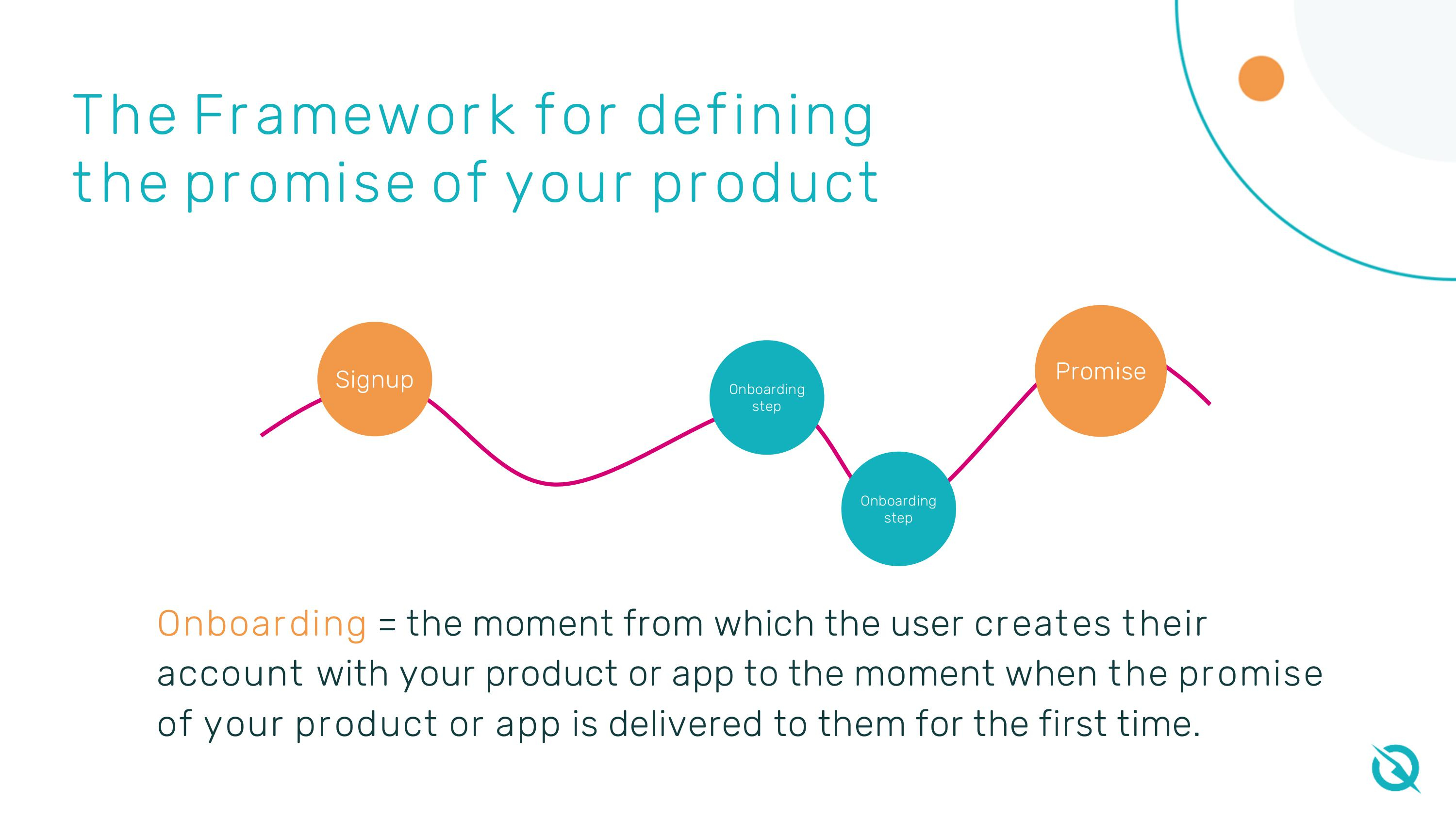
User onboarding isn’t about the guided tours of your product. Instead, it’s all about the user experiencing that sales promise:
“So onboarding is not about a user guide, it’s not about some email sequence, or something flashy that you put on your home screen. When somebody logs in, we see onboarding as that specific process that takes people to that promise because that promise is linked to that value you give to your users.”
However, experiencing the promise doesn’t necessarily mean the user is getting the value from your product. He emphasizes that this only means that they know what your product does based on their own experience.
Make the promise clear in your headlines
Most times, the sales promise is what you see on the headlines of websites and landing pages. And unless you’re a big company with an already established branding, it’s important to make it clear or easily extractable:
“The thing that impacts the onboarding process the most is the message that you put on your homepage. Go with the correct message that is going to create the correct expectations of what people should expect when they sign up. That’s when you’ll have a higher onboarding.”
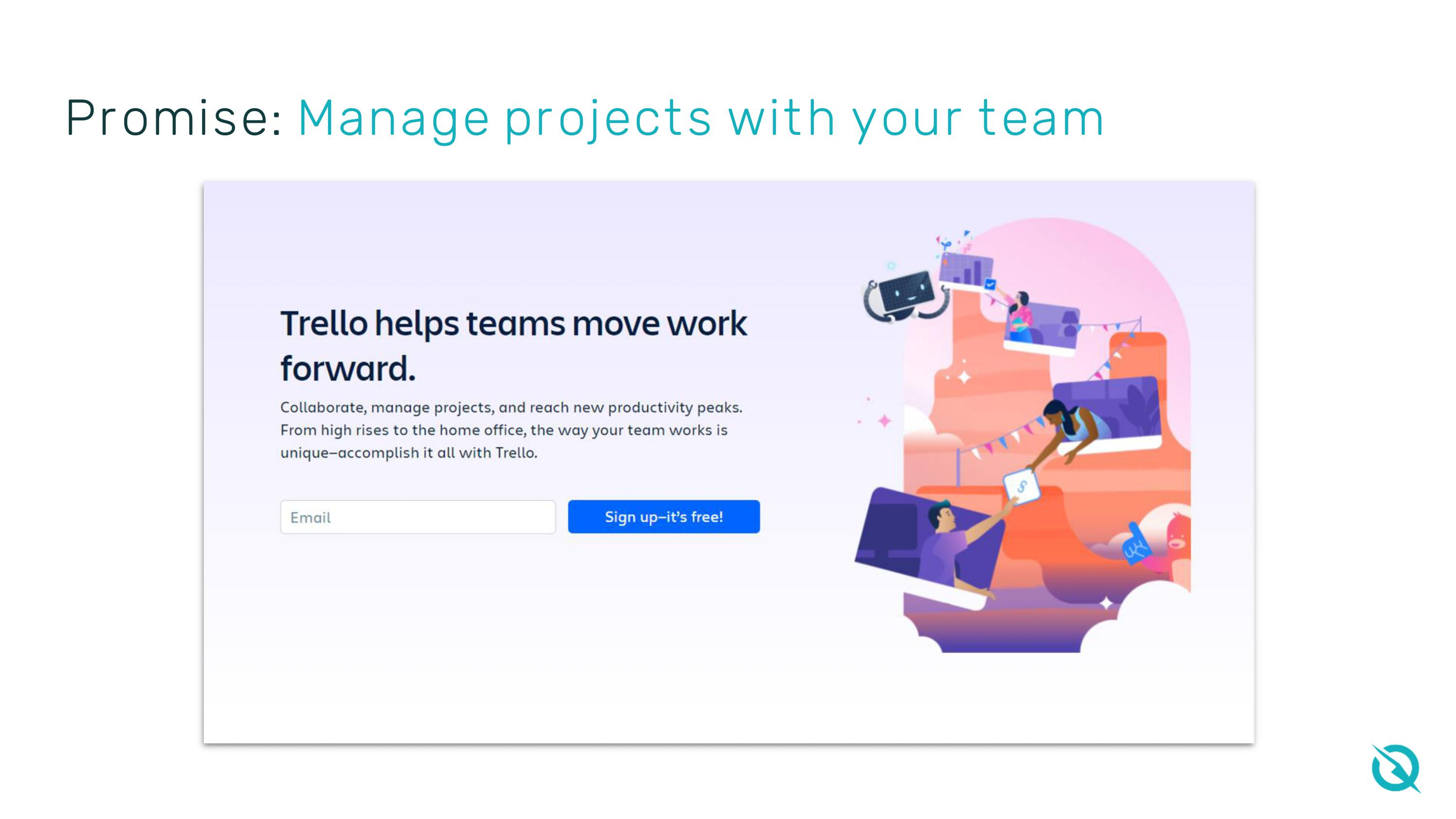
Taking this example from Trello’s landing page, it’s easy to figure out that their tool helps teams manage projects. Claudiu shares that these promises usually have a verb and noun such as “manage projects” or “deliver text messages” which are things that can be tracked.
He adds that when that promise is easy to extract, you will see good results:
“From our experience, when that promise is easy to extract, it’s probably doing a good job on acquisition and you also have a good onboarding rate. When that promise is not easy to extract, you struggle.”
The one metric for user onboarding
“The one metric” that matters the most for onboarding is:
the number of users that experience the promise of your product for the first time.
“It’s the most important metric for most companies, especially in their growth stage. Not getting that right, you’ll get a lot of noise in your data and it will make your analysis very difficult.”
In the context of the pirate metrics model, the ultimate goal of a business should be for users to repeatedly experience that promise:
“The first time you hit the promise, it’s onboarding. The second time or the fifth time, it’s an activation goal. And then when you do it on a regular basis, it’s a habit (retention).”
Claudiu also shares that after seeing their framework, some companies think that they can cheat the system to have higher onboarding rates. But it’s just not possible:
“We’ve seen companies when they’ve seen this framework and they say, ‘Oh, I’m going to cheat the system. I’m going to have people experience the promise of my product immediately after they sign up.’
E.g. for search engine optimization tools, the promise was that they will basically find rankings for your products and so on. Technical requirements were that you need to add some keywords, and then you need to analyze them, and you’ll find the insights that you need. And a lot of people started finding the right keywords and were dropping off at that technical requirement. And they said, ‘Oh, we’re going to cheat where to put the right keywords automatically for the user there.’”
But this attempt at cheating backfired because a lot of people got stuck at the next step as they didn’t understand the process.
“You do not cheat this. You just need to communicate and create the right expectations. With the wrong expectations, no matter what you do in your onboarding process, you will not match what’s in the user’s mind. So it’s almost a lost battle.”
Claudiu emphasizes that it’s crucial to create the right expectations before people sign up.
Optimizing the road to promise in 5 steps
Step 1. Define your onboarding funnel
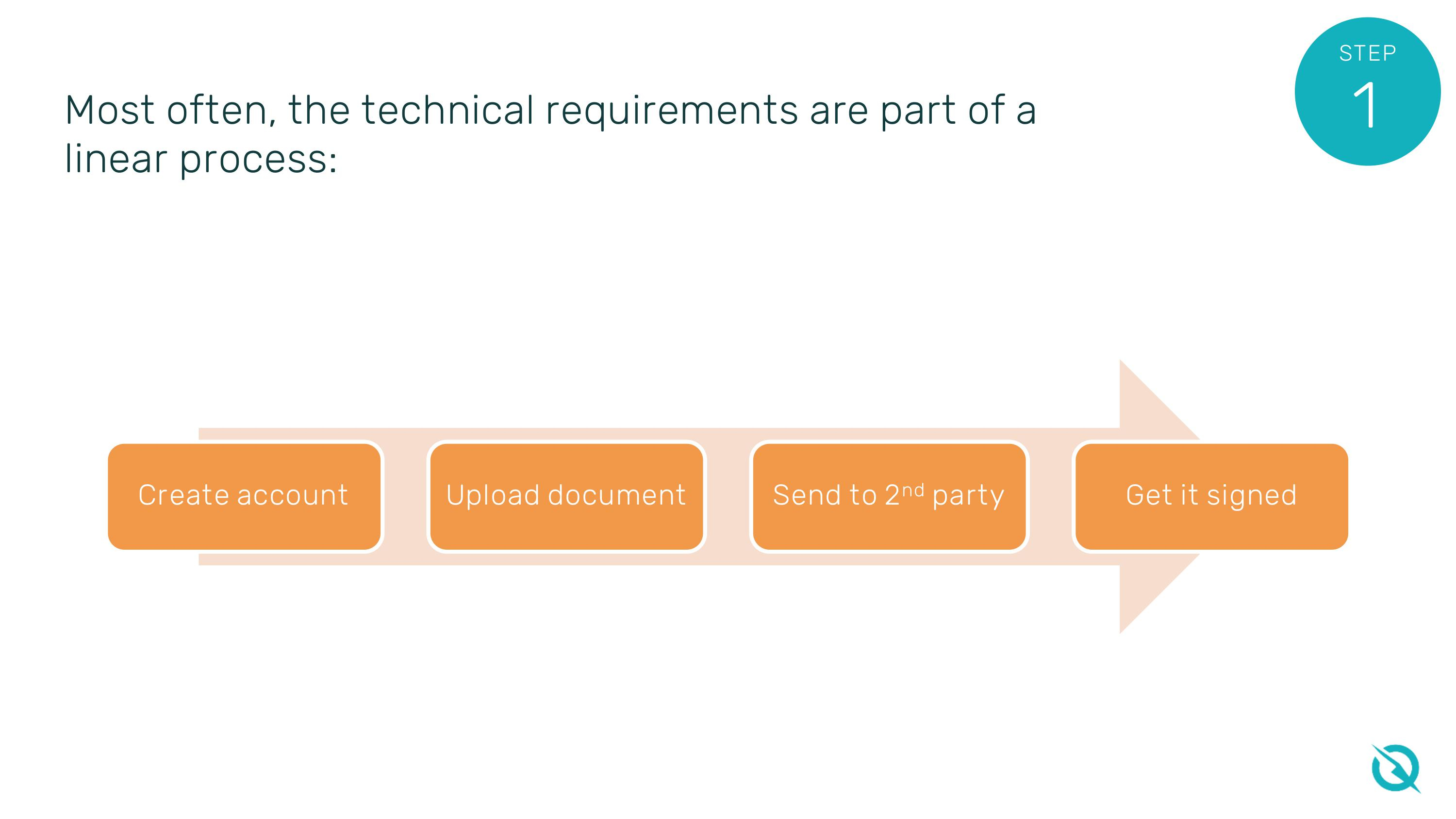
The first step is to define the technical requirements that the user needs so they can experience the promise of your product.
“If my promise is I’m going to send text messages or deliver phone calls, what does somebody need to do in order for them to be able to do that? Well, we need to create an account. They need to connect a phone number. They need to write a message and send it. Those are the technical requirements.”
It’s important to look only at these technical requirements so you would know where people get stuck.
Step 2. Analyze your onboarding funnel
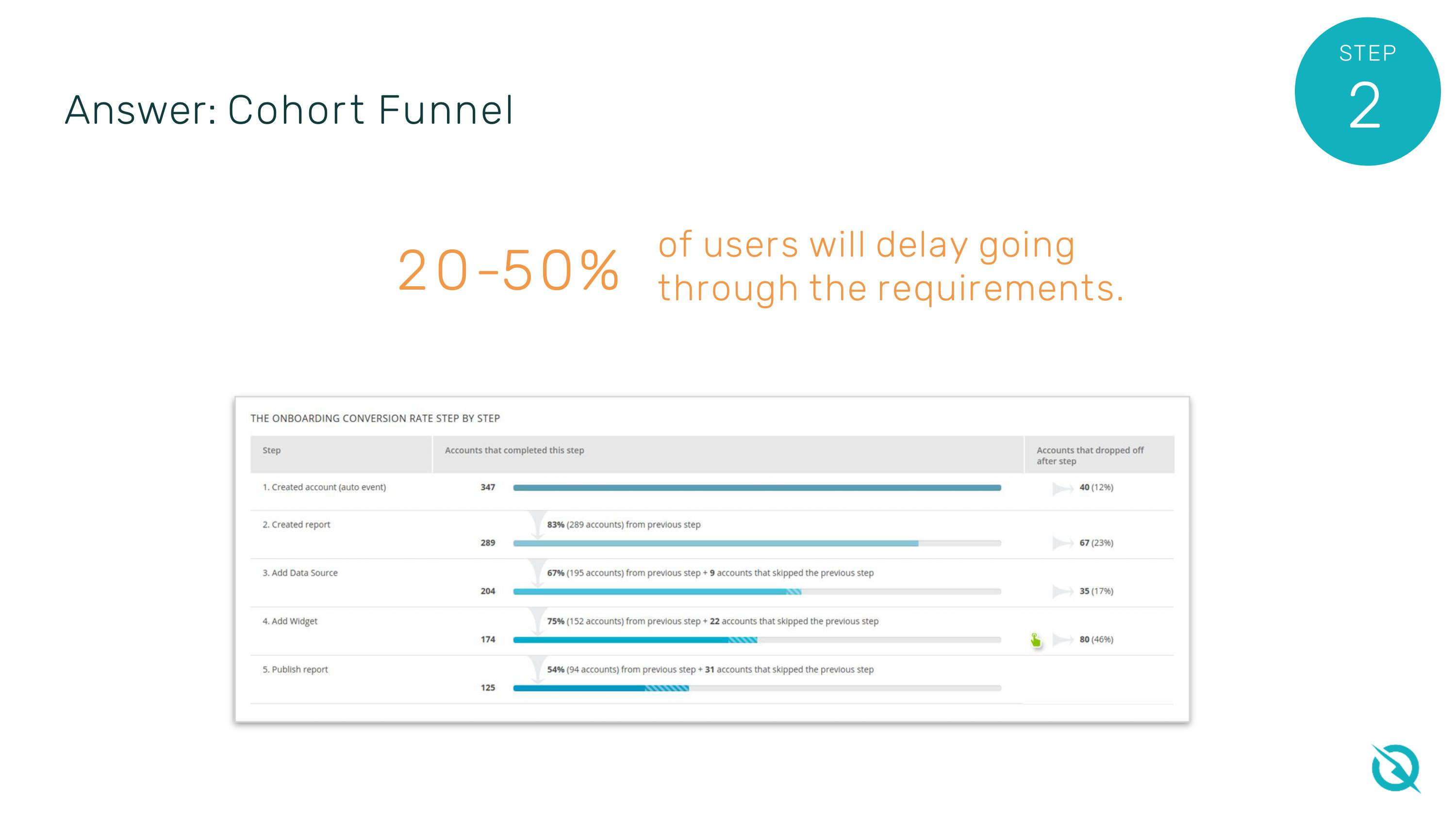
The next step is analyzing your onboarding funnel. And to do this, you need to create a cohort funnel.
Claudiu shares that the cohort funnel gives you a clearer picture of what is happening in your onboarding:
“A cohort funnel works in a different way. When I’m going to select a period, it will only give me the account created in December, but every other step it’s up to now. So if somebody finished the onboarding process, experienced that promise one second ago, they will show up as onboarded in your cohort funnel. And that’s what you want because you want a true, and accurate image of your onboarding funnel.”
After creating your cohort funnel, you need to look at the step where you are losing the most accounts in that funnel. Claudiu also emphasizes that when doing cohort funnels for B2B companies, it should be at the account or company level instead of user-based because several people might be doing the different steps of your onboarding.
Step 3. Identify what influences users to go through the technical requirement with the highest drop-off rate
In this analysis step, you have to find out what influences users to go from one technical requirement to the other.
Claudiu shares that they typically split data into three buckets:
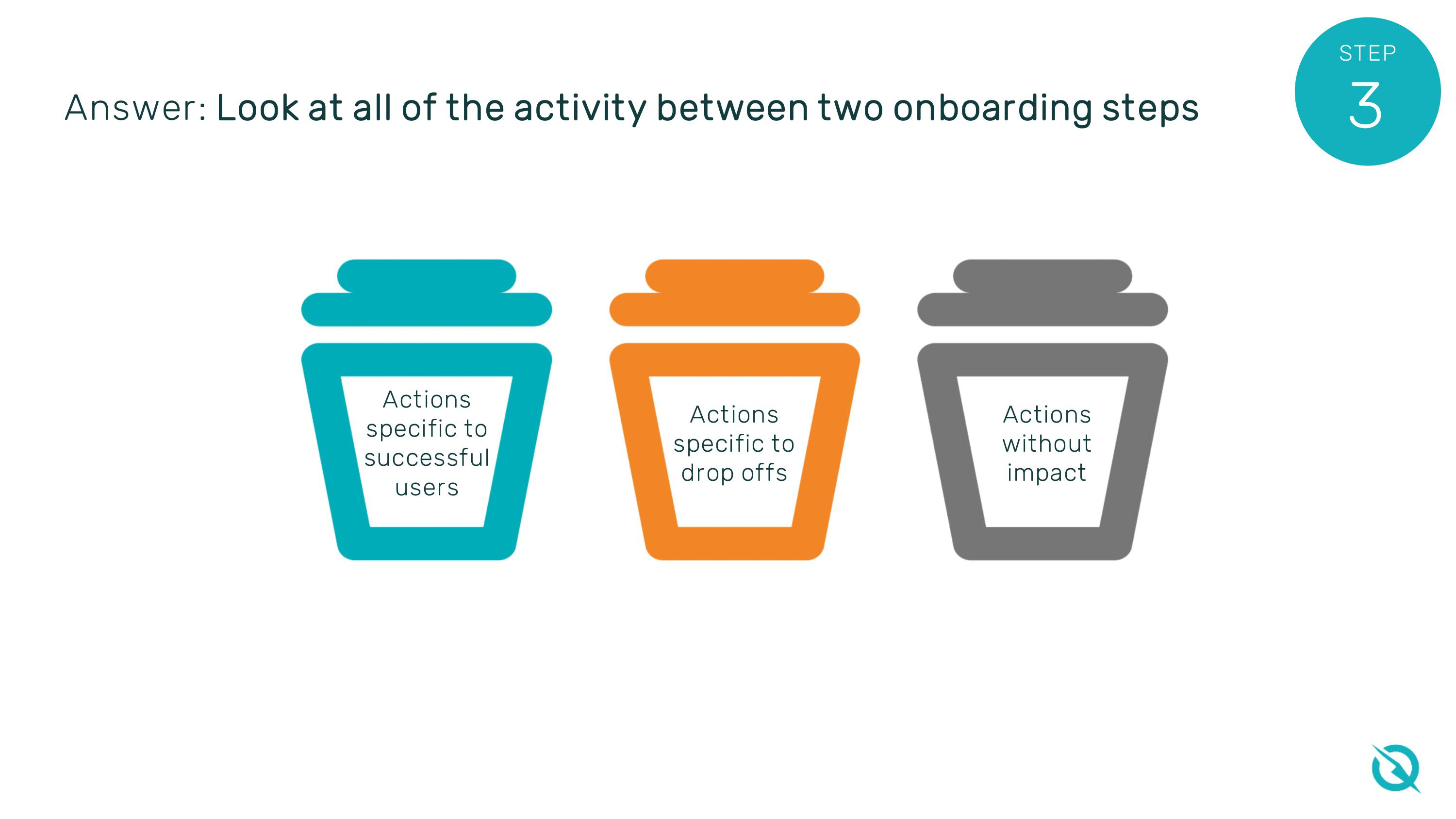
The next analysis will give you a clearer picture of what you need to do next. Claudiu shares that they typically design product guides around that data.
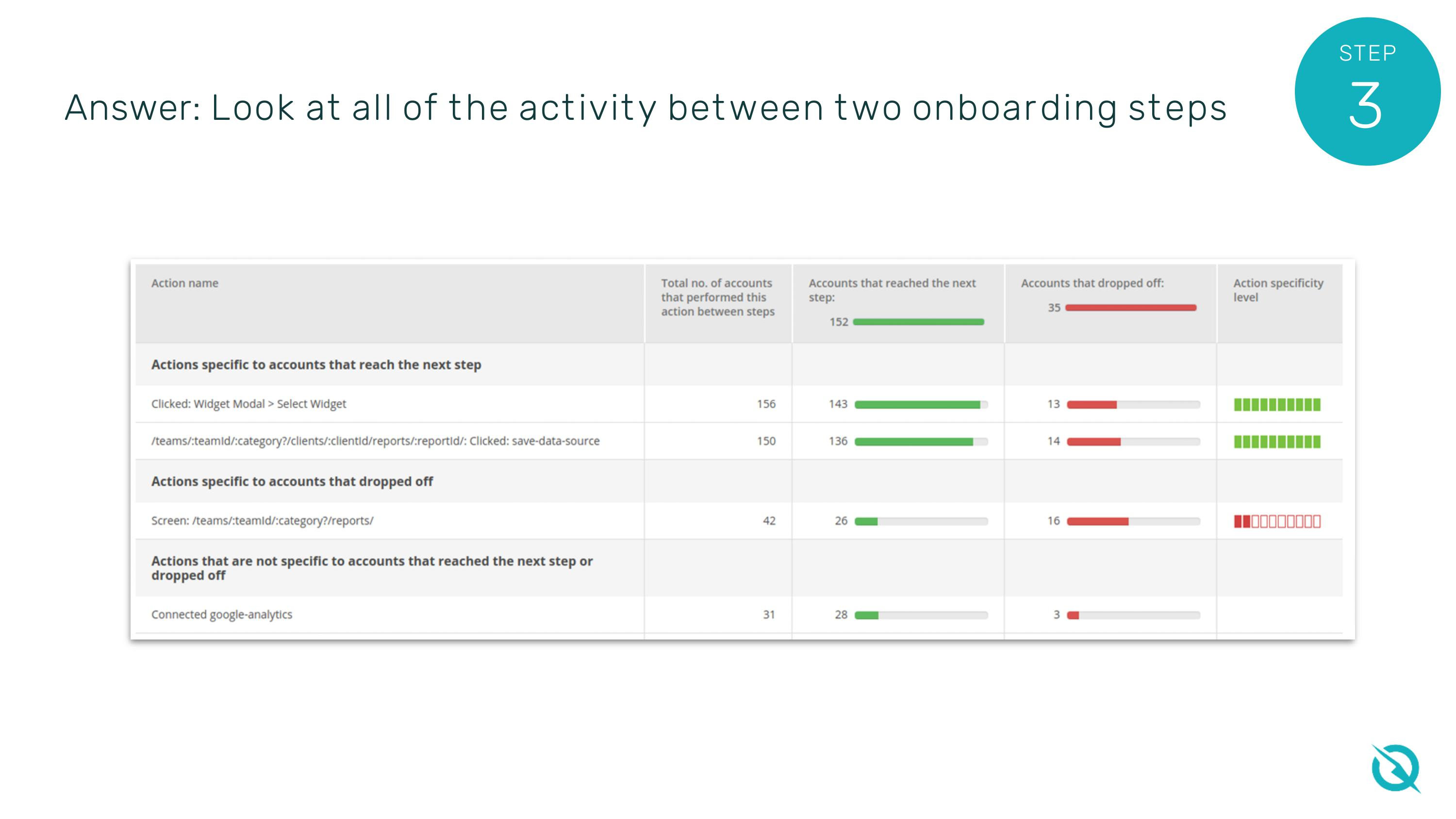
People that are abandoned are more likely to do events and actions without impact.
“We look at actions specific to accounts that reach the next step and we say, ‘hey, we need to get more people through that path because if they do that, they are much more likely to finish the onboarding process or get to the next step.’
In this case, actions that are specific to accounts that drop, it’s the same thing. ‘Hey, what’s happening there? Maybe I should do a product guide to get people back on track because they got lost there.’”
It’s important to understand which elements of the product are used by people who are more likely to finish. It can help generate a lot of ideas for emails you should send during the onboarding process.
Don’t wait for the muse. Apply this step-by-step method to write high-performing email campaigns in hours, not weeks.
Step 4. Measure how long it takes to reach the promise
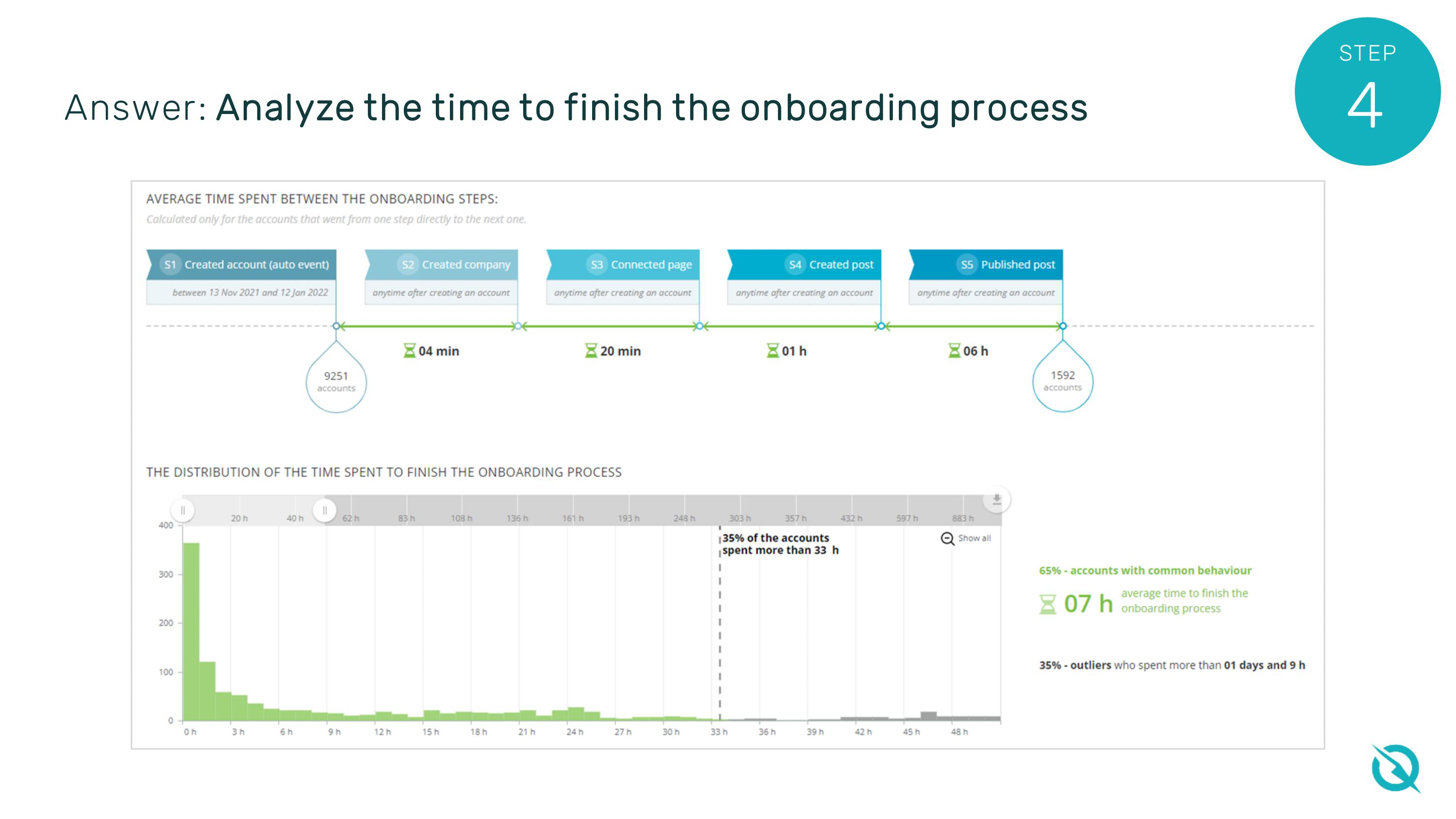
Measuring the onboarding duration is very important. To measure this, just take the time difference between account creation and experiencing the promise of your product for the first time.
However, he advises against calculating the average because it doesn’t give you an accurate representation of what the bigger picture looks like:
“You’d be inclined to do an average there. Don’t, because that average will probably describe one or two users, or one or two accounts from your database, and it’s not going to be relevant.
What we discovered is that in 90% of the cases, it looks like a long-tailed distribution. A lot of people with common behavior, and then people that are all over the place — taking their own time to finish the onboarding process.”
In the example above, most users take about 7 hours for the onboarding process of Product A while a few outliers are taking more than 1.5 days.
Claudiu adds that because you don’t look at the average, outliers won’t affect your numbers.
With this data, you can now set trigger-based emails to go out at the right time.
Going back to the example, Claudiu says the emails should go out after 1 day (or 1.5 day) to keep them moving forward, because it’s highly likely that these outliers will stop the onboarding process.
But why not send these emails during the first 7 hours? During this time, people are in their element, and it’s normal for them to take that time to finish the onboarding process.
Aside from this, email should also be compared with the product team’s expectations. So you will know where and when to intervene:
“We compare the numbers with our expectations. My product should only take 15 minutes to finish the onboarding process. Why does it take 7 hours? What’s what’s happening there?
That’s why we always report step by step as well. And after you compare to your own expectations, you need to assess where you need to intervene. Do I need to make that time smaller? Or do I need to actually let people in their own rhythm and only trying to tackle the outliers? That’s something that you should analyze.”
Step 5. Measure the influence of your emails during the onboarding process
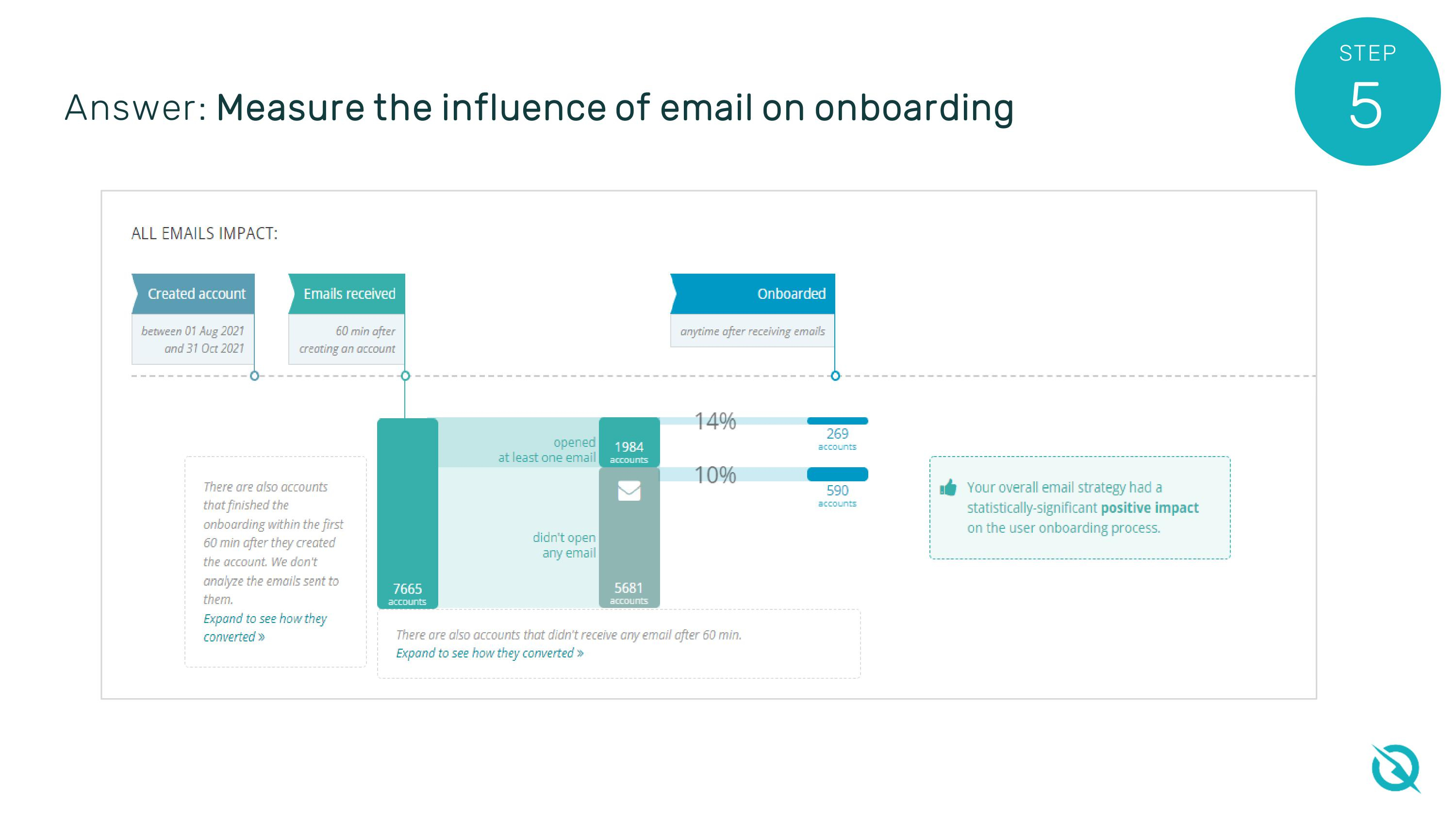
How do you know if your emails are doing a good job of helping users experience the promise of your product?
Focus on the people that receive, open, and convert compared with those that receive, don’t open and still convert to get that positive impact or no impact or negative impact:
“If you compare it with your overall conversion rate, that would be probably wrong. So we always compare it with the conversion rate of the people that received the email. So they were targeted with the same behavior, but did not open and still converted.
And like we see here, we have a 14% conversion from opening the email to onboarded. And the 10% conversion from did not open email and onboarded. So that means the email campaigns are actually having a strong impact on them finishing the onboarding process.”
Claudiu also shared that they’ve only seen under 10% of companies where the emails have significant positive impact. Without getting this data on conversion rates, you won’t know what to optimize in your process.
On the other hand, they’ve also seen a small minority of companies with a negative impact because they are the ones that typically send promotional emails during the onboarding process:
“I did not experience the promise and you already gave me a discount. We’ve seen situations where people opening those emails we’re less likely to finish the onboarding process, but that’s a minority. For the big majority, email has almost no impact.”
When is the promise experienced?
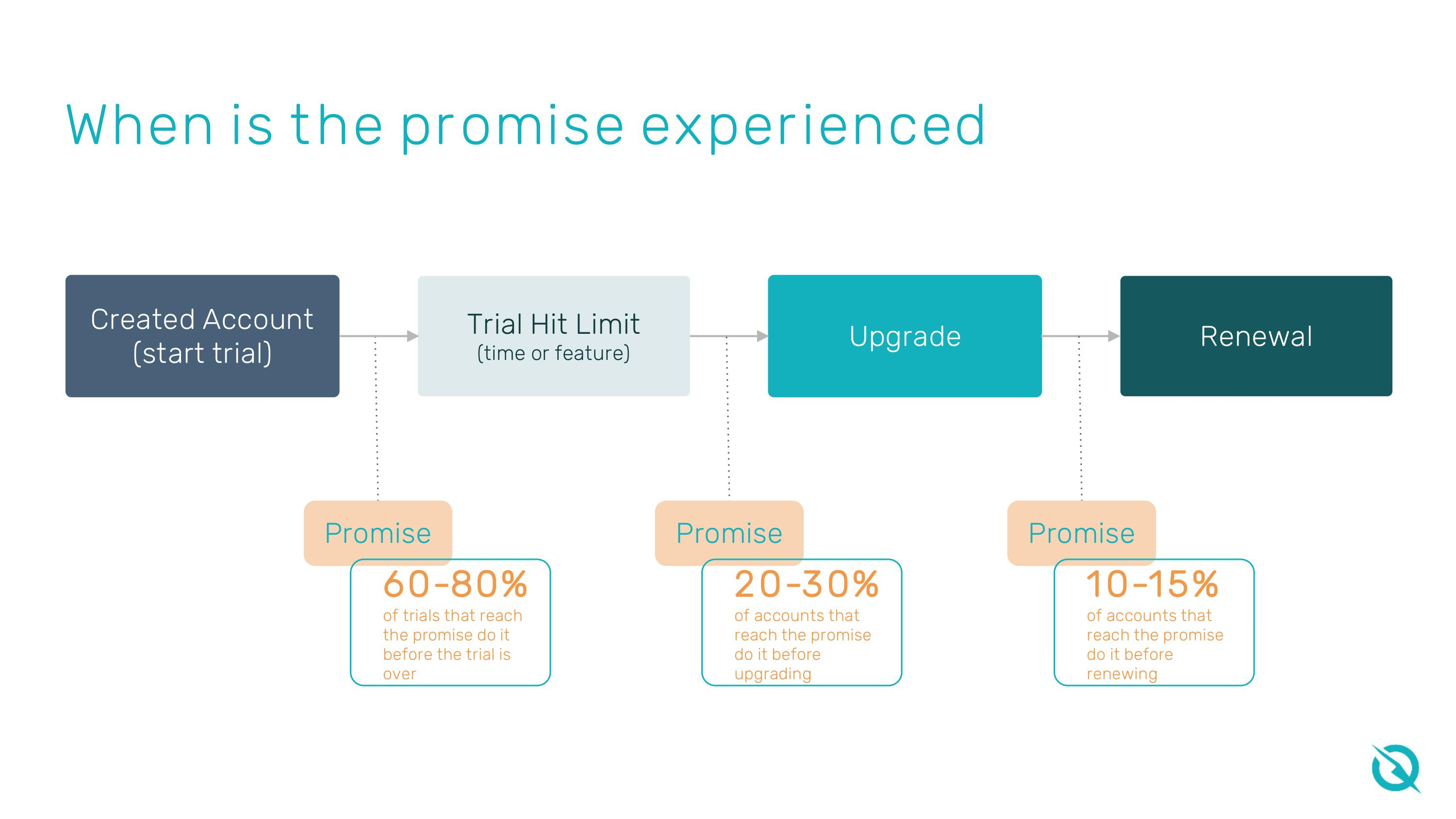
According to their data, about 60-80% of accounts experience the promise before a trial hit the limit. Meanwhile, 20-30% of the accounts experience it after a trial hit the limit. He shares that you have two options for these cases:
“You either force them to upgrade in order to experience the promise. If that promise is very strong, they’ll probably do that. If it’s not, they cancel. Or you can make the trial longer in order for them to experience the promise and then ask them for money.”
And there’s also a situation where 10-15% of accounts reach the promise only after they purchased a paid plan. But if those customers did not experience the promise after they paid, they will eventually churn:
“If somebody paid and did not experience the promise of your product, and we validated this with many companies, they will not renew more than two times. Like one time or two times max and they stop.”
Claudiu says this is the lowest hanging fruit you can get from your data. For cases like this, you should immediately call them and help them (you don’t need to ask them for their money during that call).
Onboarding benchmarks
Don’t know how to measure your onboarding success just yet? Here are some benchmarks from InnerTrends’ data:
- 40-60% is a good onboarding rate for B2B businesses running on a free trial or freemium model
- 30-50% is a good onboarding rate for B2C businesses
- Onboarding typically takes hours or days at most
- Upgrading takes days or weeks
- The correlation between experiencing the promise and upgrading is very high (when experiencing the promise goes up, upgrades also goes up)
Learn more from InnerTrends
InnerTrends is a product analytics tool that helps product-led companies optimize their app faster. To learn more about your own customer journey metrics that matter for growth, you can use their free tool — The Customer Journey Metrics Map.
Don’t miss out on new articles. Subscribe to our newsletter and get your monthly dose of SaaS email marketing insights.






